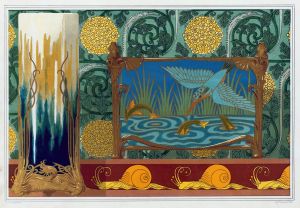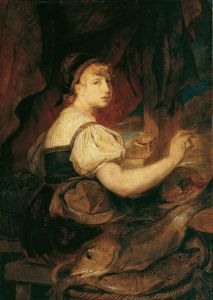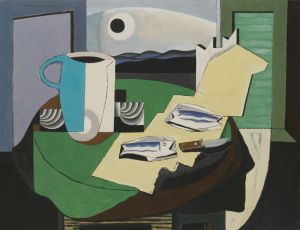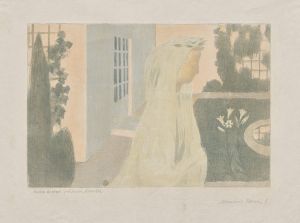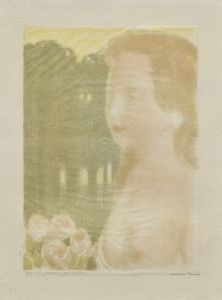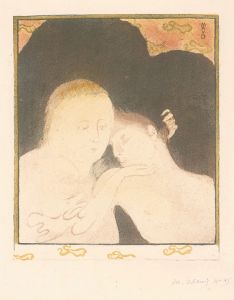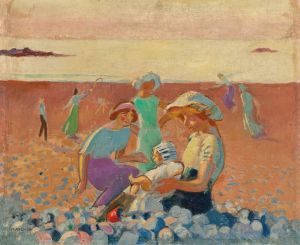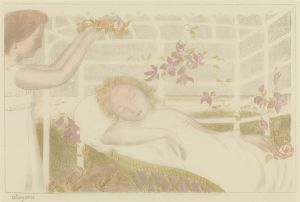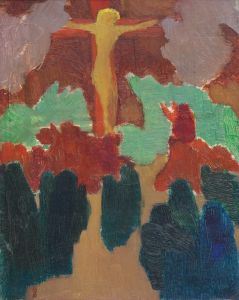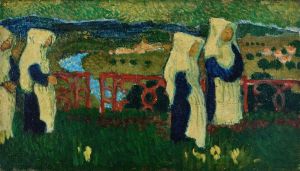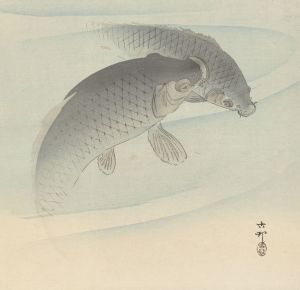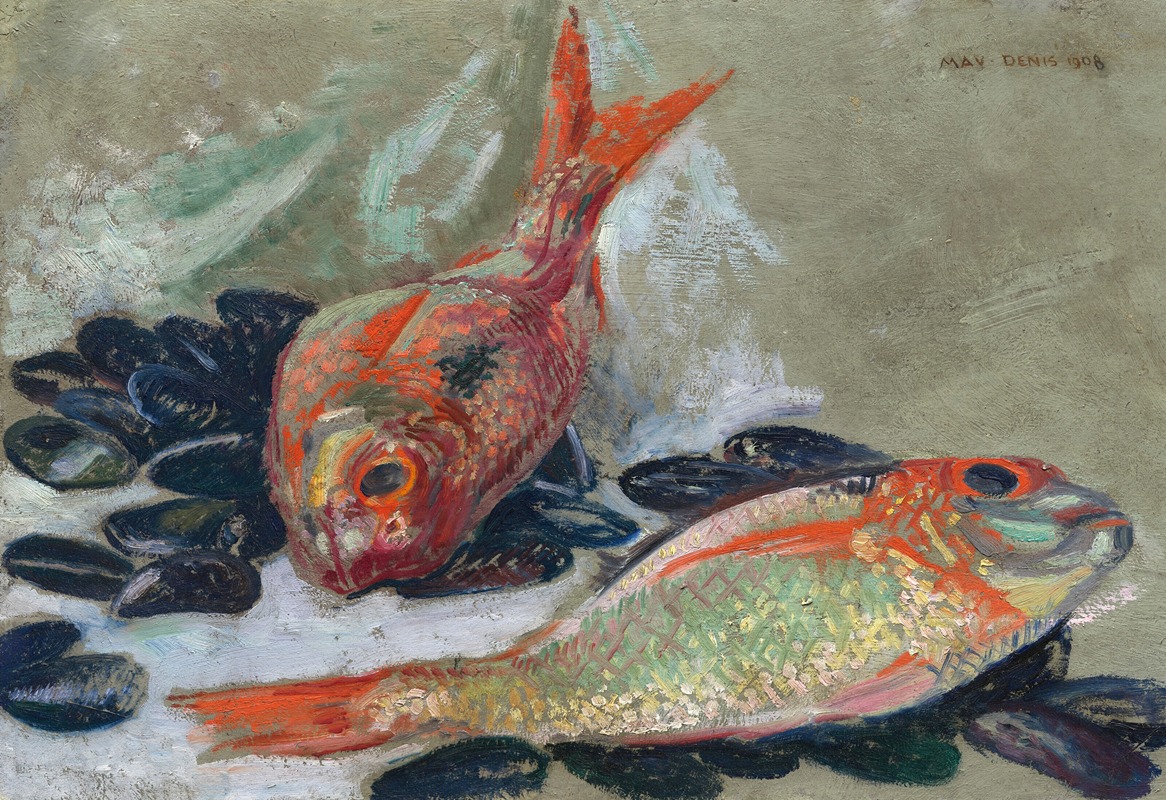
Dorades et moules
A hand-painted replica of Maurice Denis’s masterpiece Dorades et moules, meticulously crafted by professional artists to capture the true essence of the original. Each piece is created with museum-quality canvas and rare mineral pigments, carefully painted by experienced artists with delicate brushstrokes and rich, layered colors to perfectly recreate the texture of the original artwork. Unlike machine-printed reproductions, this hand-painted version brings the painting to life, infused with the artist’s emotions and skill in every stroke. Whether for personal collection or home decoration, it instantly elevates the artistic atmosphere of any space.
"Dorades et moules" (translated as "Sea Bream and Mussels") is a painting by the French artist Maurice Denis, who was a prominent figure in the Symbolist and Nabi movements. Born on November 25, 1870, in Granville, France, Denis was known for his theoretical writings on art and his contributions to the development of modern art in the late 19th and early 20th centuries.
Maurice Denis's work often focused on themes of religion, mythology, and domestic life, characterized by a decorative style and a use of bold, flat colors. His approach was influenced by his belief that a painting should be a flat surface covered with colors assembled in a certain order, a principle he famously articulated in his 1890 essay "Definition of Neo-Traditionalism."
"Dorades et moules" is an example of Denis's still life paintings, which, while less common than his religious and mythological works, demonstrate his skill in composition and color harmony. The painting depicts a simple yet vibrant arrangement of sea bream (dorades) and mussels (moules), showcasing Denis's ability to transform everyday subjects into works of art through his distinctive style.
The composition of "Dorades et moules" reflects Denis's interest in the decorative potential of painting. The fish and mussels are arranged in a manner that emphasizes their shapes and colors, creating a sense of rhythm and balance. The use of flat areas of color and the lack of traditional perspective are characteristic of Denis's work and the broader Nabi movement, which sought to break away from the naturalism that dominated academic art at the time.
Maurice Denis was a founding member of the Nabi group, which included artists like Pierre Bonnard, Édouard Vuillard, and Paul Sérusier. The Nabis were influenced by Paul Gauguin and Japanese prints, and they aimed to create art that was more symbolic and decorative. Denis's work, including "Dorades et moules," reflects these influences through its emphasis on pattern, color, and simplified forms.
Throughout his career, Denis remained committed to his belief in the spiritual and decorative functions of art. He was also deeply religious, and this aspect of his life often influenced his work. However, "Dorades et moules" stands out as a more secular piece, focusing on the beauty of everyday objects rather than religious or mythological themes.
Maurice Denis continued to be an influential figure in the art world until his death on November 13, 1943. His writings and paintings have left a lasting impact on the development of modern art, and his works are held in numerous public and private collections around the world.
"Dorades et moules" exemplifies Denis's unique approach to painting, blending his decorative style with a keen observation of the natural world. It remains a testament to his ability to find beauty in the ordinary and to elevate simple subjects through his artistic vision.





